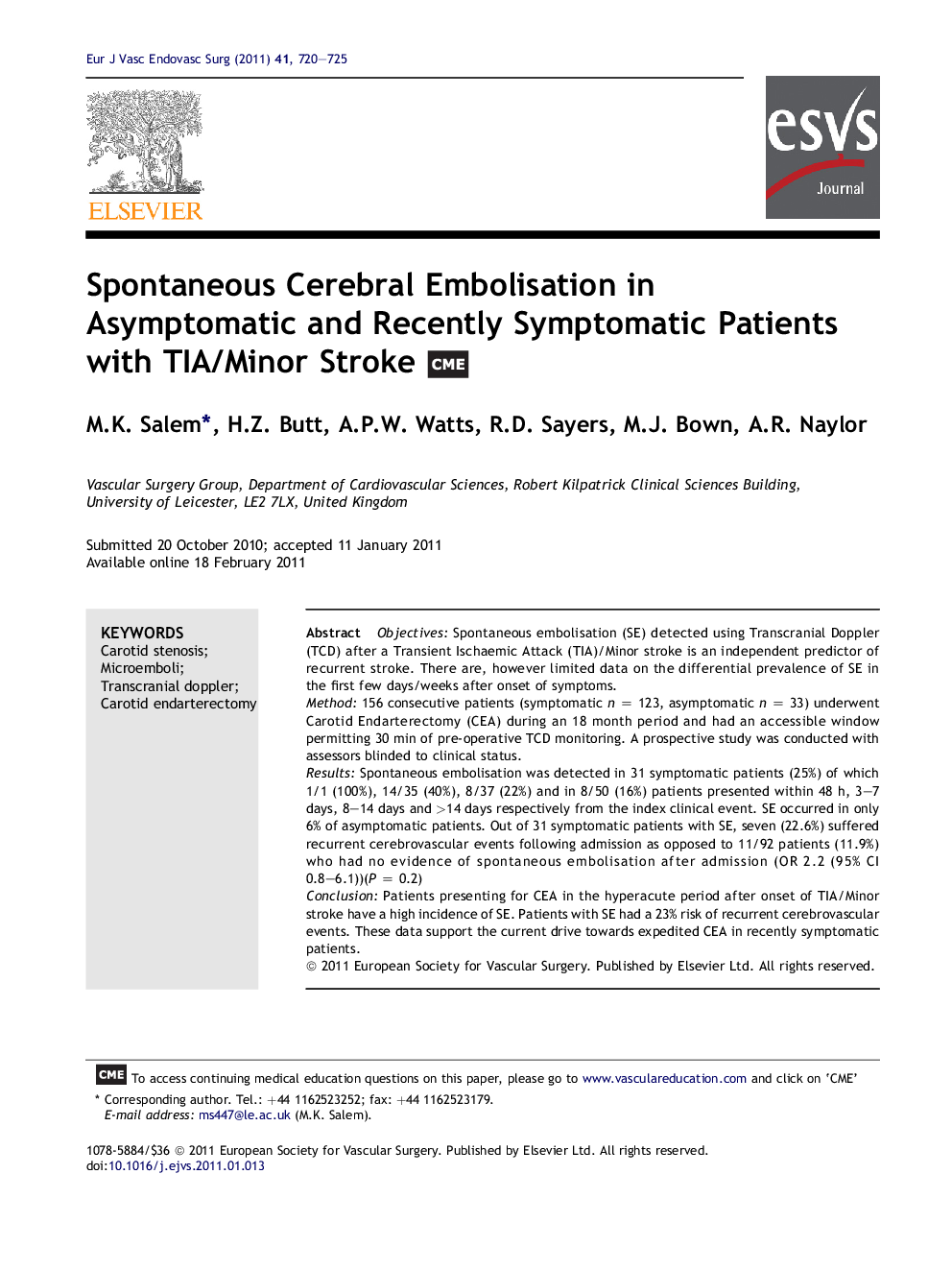| Article ID | Journal | Published Year | Pages | File Type |
|---|---|---|---|---|
| 2913311 | European Journal of Vascular and Endovascular Surgery | 2011 | 6 Pages |
ObjectivesSpontaneous embolisation (SE) detected using Transcranial Doppler (TCD) after a Transient Ischaemic Attack (TIA)/Minor stroke is an independent predictor of recurrent stroke. There are, however limited data on the differential prevalence of SE in the first few days/weeks after onset of symptoms.Method156 consecutive patients (symptomatic n = 123, asymptomatic n = 33) underwent Carotid Endarterectomy (CEA) during an 18 month period and had an accessible window permitting 30 min of pre-operative TCD monitoring. A prospective study was conducted with assessors blinded to clinical status.ResultsSpontaneous embolisation was detected in 31 symptomatic patients (25%) of which 1/1 (100%), 14/35 (40%), 8/37 (22%) and in 8/50 (16%) patients presented within 48 h, 3–7 days, 8–14 days and >14 days respectively from the index clinical event. SE occurred in only 6% of asymptomatic patients. Out of 31 symptomatic patients with SE, seven (22.6%) suffered recurrent cerebrovascular events following admission as opposed to 11/92 patients (11.9%) who had no evidence of spontaneous embolisation after admission (OR 2.2 (95% CI 0.8–6.1))(P = 0.2)ConclusionPatients presenting for CEA in the hyperacute period after onset of TIA/Minor stroke have a high incidence of SE. Patients with SE had a 23% risk of recurrent cerebrovascular events. These data support the current drive towards expedited CEA in recently symptomatic patients.
